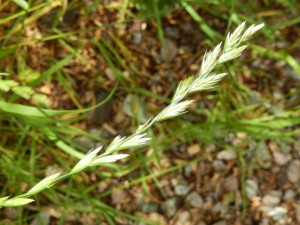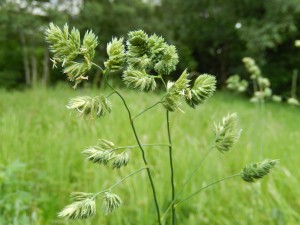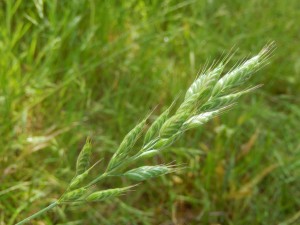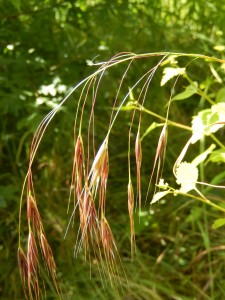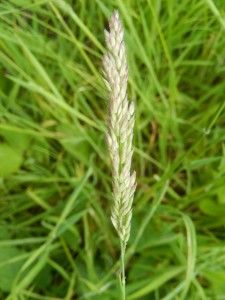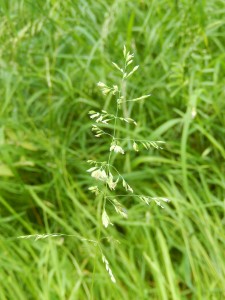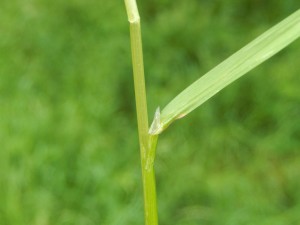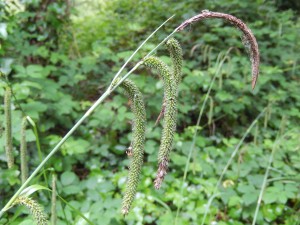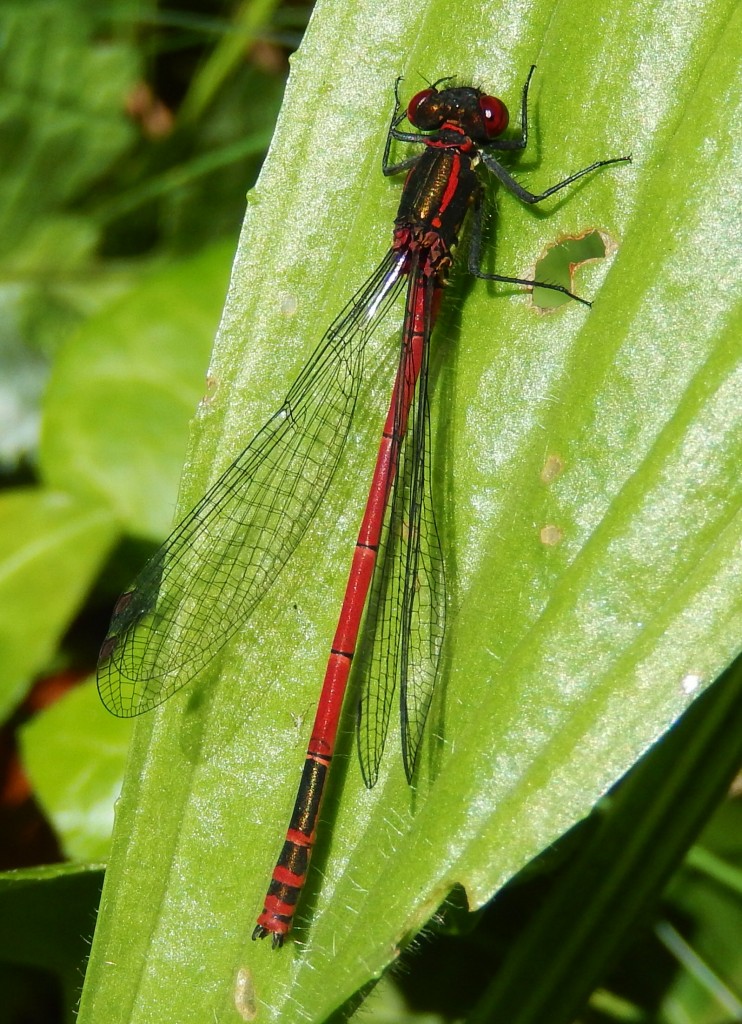
After all the rainy weather (I even found a large toadstool – in June: The Blusher, Amanita rubescens), today was suddenly hot, at least it seemed so while digging brambles out of the ramp meadow, raking up the scythed Cow Parsley in the full sun, pitchforking it into a barrow and carting it off to a deadhedge. It was a satisfying conservation job, one of those where you can see what you have done, and it looks a lot better after than before. The area is supposed to be a meadow; we successfully suppressed the overgrowth of brambles two years ago, leading to a burst of rather nice Garlic Mustard and its attendant Orange Tip butterflies last year: and a second wave of Cow Parsley that must have seeded itself really well, because it suddenly covered the area this year. Now that it’s all cut, we may hope that grasses and smaller herbs may get going: some Ground Elder at least has begun the process.
In the pond and on the vegetation for a way around it, including atop the hump, Large Red Damselflies are soaking up the sunshine, and flying in cop, egglaying – the females dip the rear half of their very long abdomens in the water to reach an aquatic plant such as Myriophyllum on which they place the eggs.
The butterfly transect was again quiet, but graced by the first Cinnabar Moth of the year: there is a fair bit of Ragwort coming up, and this adult must be newly hatched out of a pupa, presumably at ground level or below as the plants are annual.
Sure enough, after I had finished the transect, the first Holly Blue butterfly of the year, beautifully fresh and new, skipped its bright quick flight just in front of the hut.

